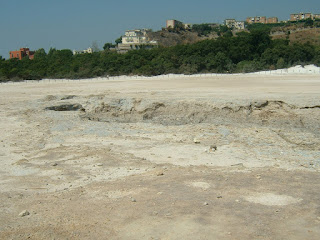Work by prolific artist still on display for all to see
Early Renaissance sculptor Donatello died on this day in Florence in 1466.
Generally acknowledged as the greatest sculptor of the 15th century, Donatello left a legacy of wonderful statues in marble and bronze, some still out in the open and delighting visitors to Italy free of charge today.
 |
| Donatello's bronze equestrian statue in front of the Basilica di Sant' Antonio in Padua |
He was born Donato di Niccolò di Betto Bardi in Florence in about 1386. He studied classical sculpture, which later influenced his style, and then worked in a goldsmith’s workshop and in the studio of artist Lorenzo Ghiberti.
One of his most famous early works is a statue of David, originally intended for the Cathedral, but which stood instead for many years in Palazzo Vecchio in Florence.
Donatello’s work also shows influences of the architect Filippo Brunelleschi, a friend with whom he often travelled to Rome.
Brunelleschi’s style can be seen in Donatello’s statues of St Mark and St George, executed for the exterior of the Church of Orsanmichele in Florence, which represent the first translation into sculpture of the architect’s laws on perspective.
Donatello was invited to Padua in 1443, where he was to produce one of his greatest works, the bronze equestrian statue of Gattamelata.
The statue was completed in about 1450 and portrays the military leader Erasmus da Narni, who was known as Gattamelata (honeyed cat).
It is believed to be the earliest Renaissance equestrian statue that still survives and was a precedent for later sculptures honouring military heroes.
The soldier and his horse are both portrayed in life size by Donatello, instead of being larger than life as with classical equestrian statues.
Donatello returned to Florence and for his last commission produced reliefs for the bronze pulpits in the Basilica of San Lorenzo. He was still working on them in 1466 when he died. Donatello is buried in the Basilica of San Lorenzo.
Travel tip:
The Statue of Gattamelata still stands in the open air for all to see to the left of the Basilica di Sant’Antonio as you approach from the direction of Via del Santo. Donatello was commissioned by the military leader’s family to create a monument in memory of the great Commander of the Venetian Republic. The statue is mounted on a pedestal that resembles a sepulchre. Gattamelata appears in the style of a Roman emperor astride his horse. His head is uncovered and there is a decisive expression on his face.
Travel tip:
The Basilica of San Lorenzo in Florence was the parish church of the Medici family. Donatello was about 74 when he began work on the bronze pulpits in the nave, which depict Christ’s passion and resurrection, and they were not quite finished when he died. His tomb can be found in the north transept of the church.
Home






